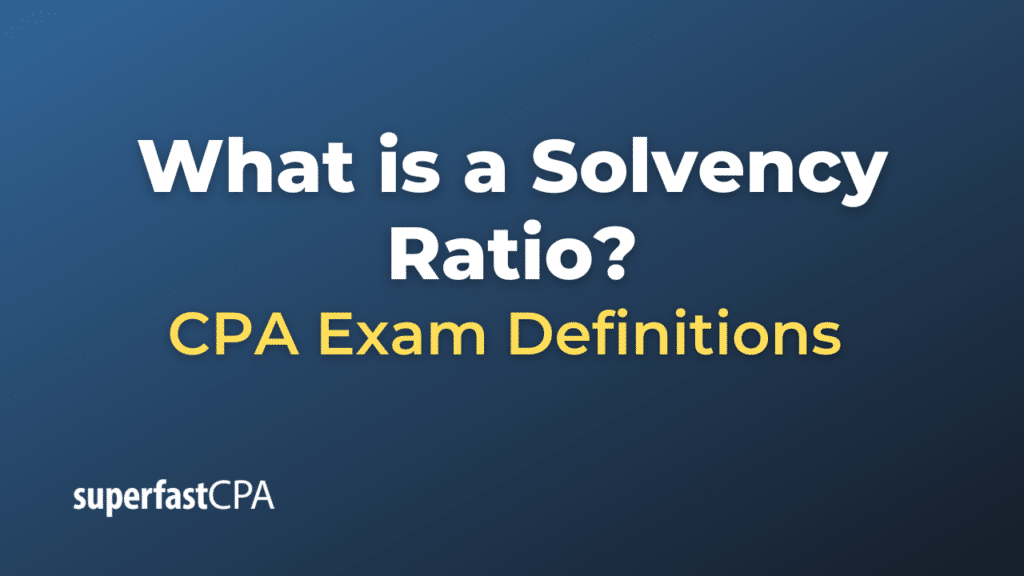Solvency Ratio
A solvency ratio is a key metric used to measure the financial health of an entity, typically a company. It assesses the company’s ability to meet its long-term obligations. The solvency ratio is particularly useful for potential investors or creditors to determine the risk associated with lending to or investing in a company.
The solvency ratio is calculated as:
Solvency Ratio = Total Assets / Total Liabilities
A high solvency ratio indicates a more financially healthy and solvent company, as it suggests the company has more assets relative to its liabilities. Conversely, a low solvency ratio might indicate that a company is burdened by debt and might have difficulty meeting its long-term obligations.
It’s important to note that what’s considered a “good” solvency ratio can vary by industry. Some industries might typically operate with more debt, so a solvency ratio that’s considered low in one industry might be seen as acceptable in another.
The solvency ratio is just one of several ratios used to assess a company’s financial health. Other solvency-related ratios include the debt-to-equity ratio, the equity ratio, and the times interest earned ratio, among others.
Example of a Solvency Ratio
Let’s use a fictional company, “GreenTech Enterprises,” to illustrate the concept of the solvency ratio.
Scenario: “GreenTech Enterprises’ Financial Health”
Background: GreenTech Enterprises is a company specializing in producing renewable energy solutions. It has been operating for a few years and has taken on debt to fund some of its major projects.
Financials:
- Total Assets: $5,000,000
- Total Liabilities: $3,500,000
Calculating Solvency Ratio:
Solvency Ratio = Total Assets / Total Liabilities
Solvency Ratio = $5,000,000 / $3,500,000
Solvency Ratio = 1.43
This means that for every dollar of liability, GreenTech Enterprises has $1.43 in assets.
Analysis: A solvency ratio of 1.43 indicates that GreenTech has more assets than liabilities, which is generally a positive sign of financial health. This suggests that GreenTech is relatively well-positioned to cover its long-term obligations.
However, whether 1.43 is a “good” solvency ratio for GreenTech would depend on the industry average and the ratios of other companies in the renewable energy sector. If most companies in this sector have a solvency ratio of 2 or higher, GreenTech might be seen as having a higher risk profile. On the other hand, if 1.43 is above the industry average, GreenTech might be viewed as more financially stable than its peers.
This example provides a snapshot of how the solvency ratio can offer insights into a company’s financial position. However, as mentioned earlier, for a complete picture, it’s essential to consider other financial metrics, industry benchmarks, and the broader business context.













